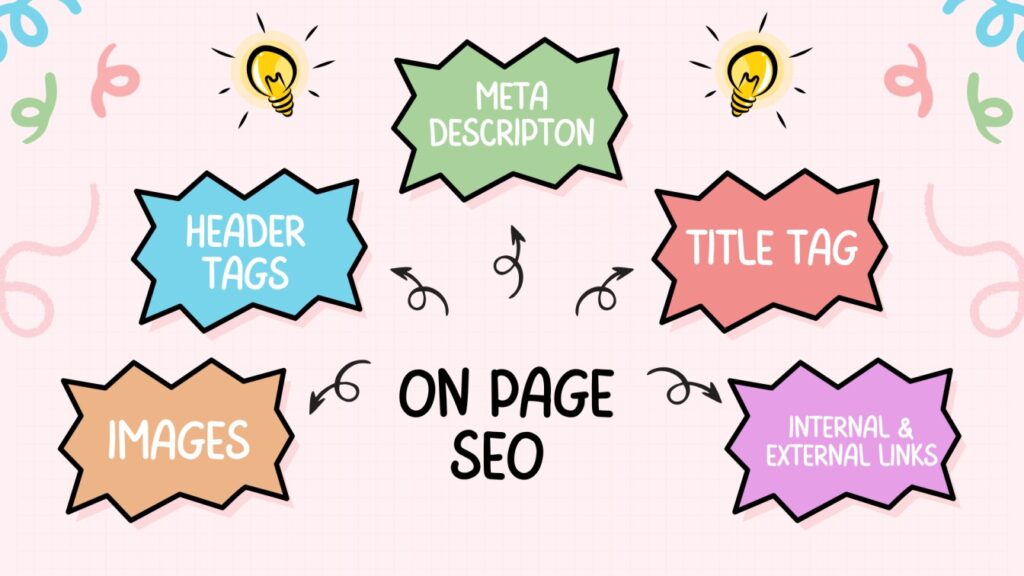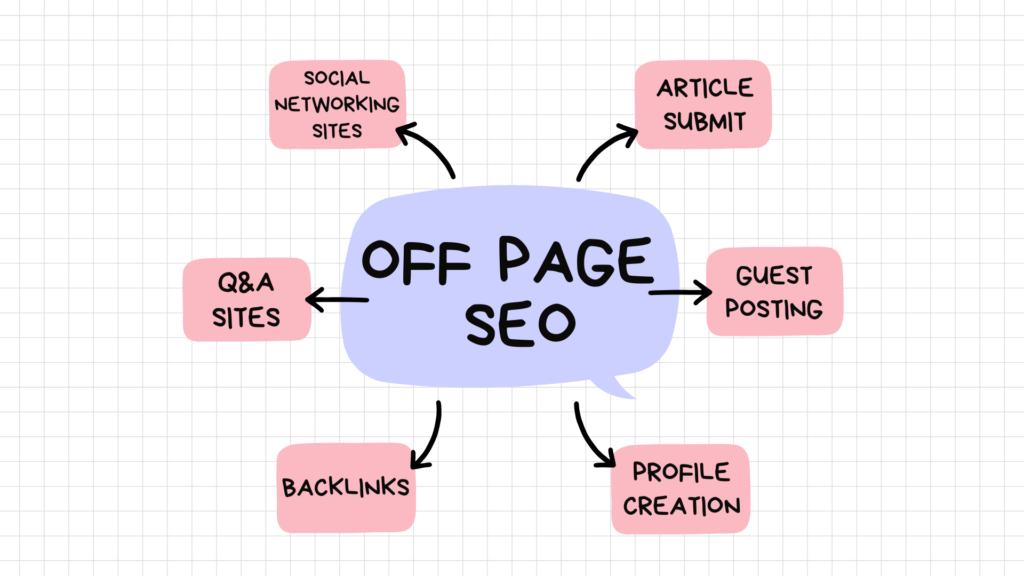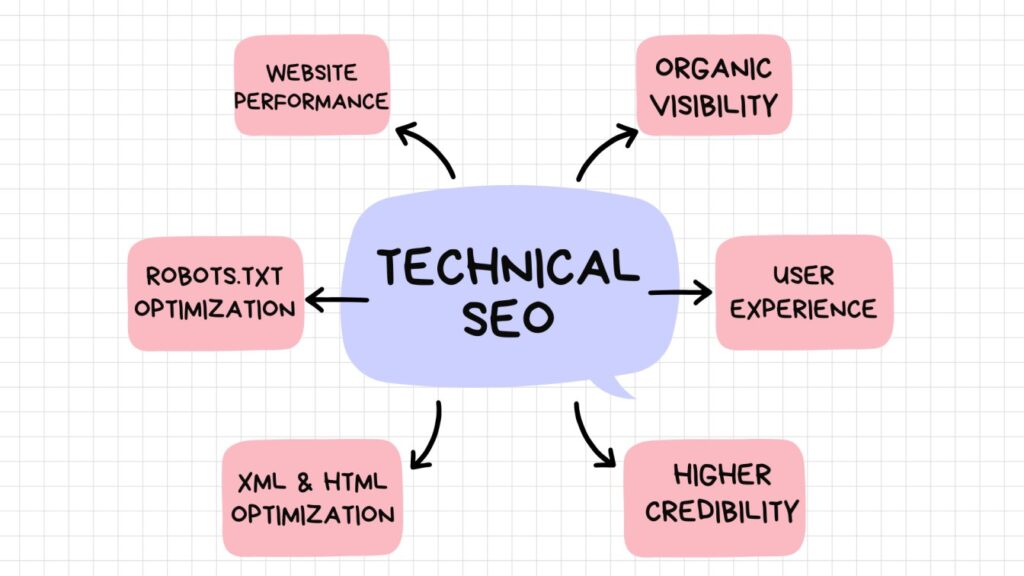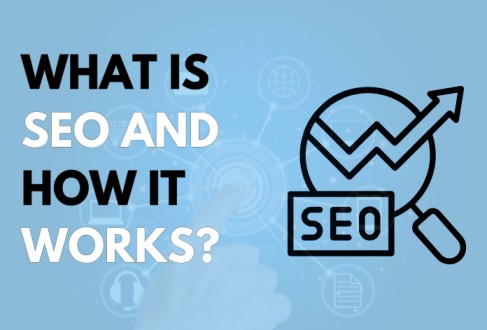With the digital world in overdrive, it is not sufficient to have simply a website if you want visitors. You must make sure that people can discover your site, typically when they are searching for topics or products you provide. Search Engine Optimization — This is Where But what is SEO, exactly? So Search Engine Optimization is simply optimizing a website to show up higher in the rankings on search engines when potential visitors are searching for your site and drive organic traffic and visibility.
Let’s explore what SEO is, how it works, and why it’s a crucial aspect of digital marketing nowadays.
What is SEO and How It Works : What is SEO?
Search Engine Optimization involves modifying a website so that it ranks higher on search engine results pages (SERPs). The goal of is to attract organic traffic, which means visitors who find your site through a regular search, not through paid advertisements. So, with optimization you can create an online presence or at least a brand authority and this is important because Search Engine Optimization follows what people are searching for on the internet.
When people look up phrases like “what is SEO” or “SEO tips,” search engines try to give them the most helpful information that fits what they want to know. By making your website’s content, layout, and reputation better, SEO helps search engines understand and rank your pages more easily.
What is SEO and How It Works : How It Works?
SEO works by making sure your website’s content and technical settings match what search engines look for. These search engines check many things to decide how good, important, and easy-to-use a website is for a search. Here are the main parts that help SEO work well:
- Keyword Research
- This means finding the words and phrases people type into search engines to find information about your business.
- Words like “what is SEO” or “benefits of SEO” help you create content that matches what people are looking for.
FREE KEYWORD RESEARCH TOOLS:
2. On-Page SEO
On-page SEO involves optimizing elements on each page, including:

- Title tags and meta descriptions: These labels give an overview of the content and use important keywords to get people to click.
- Header tags (H1, H2, etc.): These organize the content and assist search engines in understanding the order of importance.
- Content Quality: Good content that uses the right keywords.
- Internal Linking: Links to other pages on your site help users move around easily and help search engines explore the site better.
3. Off-Page SEO

- This involves methods to increase a website’s credibility, mainly by getting links from trustworthy websites.
- Other factors that help off-page SEO include shares on social media and mentions of your brand, which indirectly support your SEO efforts.
4. Technical SEO
Technical SEO improves the site’s behind-the-scenes parts to make sure everything works well. Important parts are:

- Site Speed: Quickly loading pages enhance user satisfaction and improve search rankings.
- Mobile Optimization: Google’s mobile-first indexing means having a responsive design is very important.
- HTTPS: Makes sure the website is safe, which helps it rank higher.
- Structured Data: Also called schema markup, it assists search engines in understanding particular details on the page, which enhances visibility for related searches.
How Do Search Engines Work?
To grasp how SEO works, it’s useful to understand how search engines function. Engines like Google follow a process involving crawling, indexing, and ranking to provide search results.
- Crawling: Search engines use special programs called crawlers or spiders to discover new and updated information. These crawlers follow links and explore the internet to find the latest content.
- Indexing: After a page is scanned, its content is examined and saved in a large database, called an index. Search engines use this index to find and show users the information they need.
- Ranking: When someone searches for something, the search engine looks through its records and uses advanced methods to decide which results to show first. Things that affect the order of results include how relevant the keywords are, the quality of the content, how much people interact with the site, the number of other sites linking to it, and how well the site works.
READ MORE:
Top 10 Online Business Ideas for 2025!
What is SEO and How It Works : What are the Benefits of SEO in Digital Marketing?
In digital marketing, SEO provides several special benefits that make it very important:
- Increased Visibility and Traffic: Pages with higher rankings are easier for users to find and tend to get more organic traffic.
- Enhanced Credibility and Trust: Websites that appear at the top of search results are usually seen as more dependable and trustworthy by people.
- Cost-Effective Marketing: Unlike pay-per-click (PPC) ads, which charge you for each visitor, SEO brings in free traffic once your pages are ranked.
- Better User Experience: SEO best practices, such as making a website faster and more mobile-friendly, help create a better experience for users, which can lead to them spending more time on the site.
Long-Term Results: SEO can bring continuous traffic and keep your brand visible, making it a valuable long-term strategy in digital marketing.
How Does SEO Compare to SEM and PPC in Digital Marketing?
In digital marketing, SEO(Search Engine Optimization), SEM (Search Engine Marketing), and PPC (Pay-Per-Click) are important methods for making your website more visible on search engines. Here’s how they differ:
- SEO (Search Engine Optimization):
- Aims at improving positions in natural search results.
- Focuses on improving content and website layout to attract non-paid visitors.
- SEM (Search Engine Marketing):
- SEM is a more comprehensive strategy that combines both SEO and paid advertising.
- Uses a mix of natural and paid methods to increase exposure.
- PPC (Pay-Per-Click Advertising):
- In PPC, advertisers pay for every click their ads get.
- Offers instant visibility, but only during the campaign’s duration.
SEO is great for attracting steady, long-lasting visitors to your site. PPC gives fast results but needs continuous spending, while SEM uses both methods for a complete strategy.
What is SEO and How It Works : What are the Types of SEO?
SEO can be divided into three main types, all of which are important for getting the highest rankings:
- On-Page SEO
- Aims to make each page relevant for specific target keywords.
- Important parts are title tags, good content, headings, images, and internal links.
- Off-Page SEO
- Includes actions outside your website that increase its credibility, like creating backlinks.
- Other factors involve interacting on social media and writing for other websites as a guest.
- Technical SEO
- Focused on enhancing the site’s structure to help search engines easily find and list it.
- Important factors are website loading speed, mobile device compatibility, HTTPS safety, and organized data.
What is SEO and How It Works : Conclusion
A clear, actionable sense of what SEO is, how it works and what value it provides to your digital marketing efforts is the bedrock of any successful venture into the space. SEO is an investment for the long term; it establishes authority, increases visibility, and improves user experience. Although you will need some time to observe results, when it comes to getting organic traffic and establishing trustworthiness by your audience a great SEO strategy is priceless. Enterprises that look to on-page, off-page and technical SEO will have a well-rounded strategy that provides ongoing website traffic and growth.
What is SEO and How It Works : FAQs
-
What is SEO, in simple words?
‘what is SEO in digital marketing’ simply, it is an optimisation process to improve a website by increasing its visibility in SERPs.
-
What does backlink mean?
Backlinks are links on other websites that lead back to a page on your own website.
-
How exactly does SEO work?
SEO uses elements such as keywords, internal and external links, and well-optimized content to assist search engines in locating content and improving a website’s ranking on search engine result pages (SERPs).

